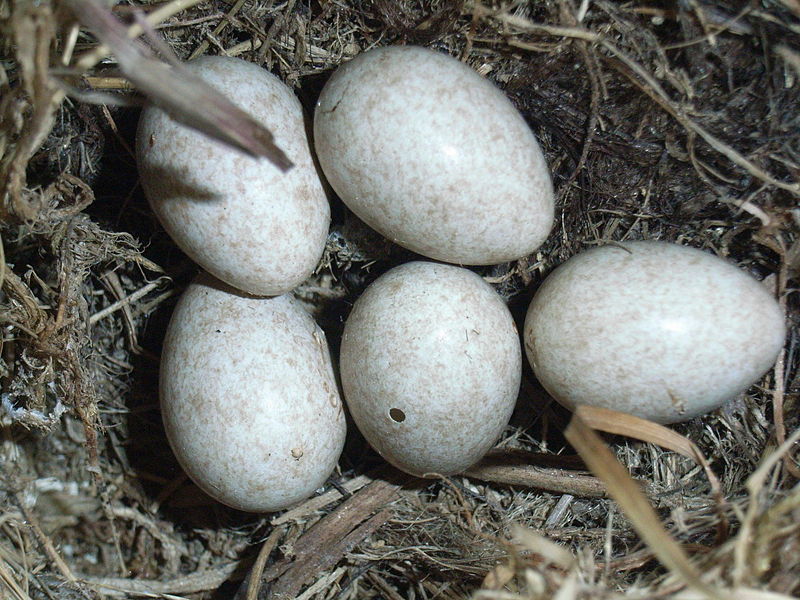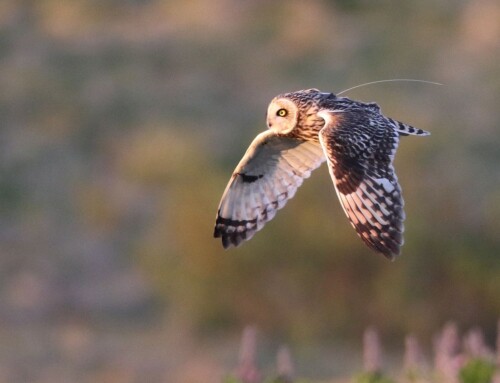LINKED PAPER
Cold weather events provoke egg ejection behaviour in open‐nesting passerines. Shitikov, D., Samsonov, S., & Makarova, T. 2019. IBIS. DOI: 10.1111/ibi.12695 VIEW
Birds sometimes push eggs out of their nest. The possible explanations for this behavior are manifold. Birds might be removing eggs that other individuals have deposited in their nest. This phenomenon – intraspecific brood parasitism – is quite common in birds (Yom-Tov 2008) and some species are able to discriminate between their own eggs and those from an opportunistic neighbor. However, sometimes an individual might mistake her own eggs for parasitized ones and accidently remove the eggs she laid (Stokke et al. 2002). In addition, eggs can also be removed during nest sanitation. While cleaning the nest, a bird might push out some unhatched eggs (Guigueno & Sealy 2012).
Adaptation
Some ornithologists proposed that ejecting eggs could be an adaptive behavior of female birds. By removing eggs from their nest, they are optimizing the clutch size. More eggs may increase the risk of predation (Lima 2009): more parental visits attract predators to the nest site and – once the eggs hatch – begging calls of nestling give away the exact location of the nest. However, ejected eggs can also provide important clues for observant predators. An alternative advantage of egg ejection is related to energy expenditure. A larger clutch requires more energy to keep warm, so birds might remove eggs under cold weather conditions (Lobato et al. 2006).
Figure 1 The egg ejection events (indicated by the arrows) occurred during periods of bad weather, such as low temperature (open circles) and heavy rainfall (black circles).
Russia
A team of Russian scientists tried to unravel the reasons behind egg ejections in three songbirds: the Booted Warbler (Iduna caligata), the Whinchat (Saxicola rubetra) and the Yellow Wagtail (Motacilla flava). Between 2005 and 2017, the researchers monitored 762 nests in the Russky Sever National Park and recorded 25 egg ejection events. The majority of these events occurred during adverse weather conditions. Specifically, several Booted Warblers and Yellow Wagtails removed their eggs during a three-day period when the mean temperature dropped and during another three-day period when rainfall peaked. This suggests that the birds are adjusting their clutch size in response to bad weather conditions.
References
Guigueno, M. F., & Sealy, S. G. 2012. Nest sanitation in passerine birds: implications for egg rejection in hosts of brood parasites. Journal of Ornithology 153: 35-52. VIEW
Lima, S. L. 2009. Predators and the breeding bird: behavioral and reproductive flexibility under the risk of predation. Biological reviews 84: 485-513. VIEW
Lobato, E., Moreno, J., Merino, S., J. Sanz, J., Arriero, E., Morales, J., Tomás, G. & Martínez‐de la Puente, J. 2006. Maternal clutch reduction in the pied flycatcher Ficedula hypoleuca: an undescribed clutch size adjustment mechanism. Journal of Avian Biology 37: 637-641. VIEW
Stokke, B., Honza, M., Moksnes, A., Røskaft, E. & Rudolfsen, G. 2002. Costs associated with recognition and rejection of parasitic eggs in two European passerines. Behaviour 139: 629-644. VIEW
Yom‐Tov, Y. 2008. An updated list and some comments on the occurrence of intraspecific nest parasitism in birds. Ibis 143: 133-143. VIEW
Image credits
Featured image: Eggs of a Yellow Wagtail Motacilla flava | Notafly | CC BY-SA 3.0 Wikimedia Commons






